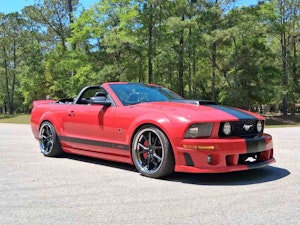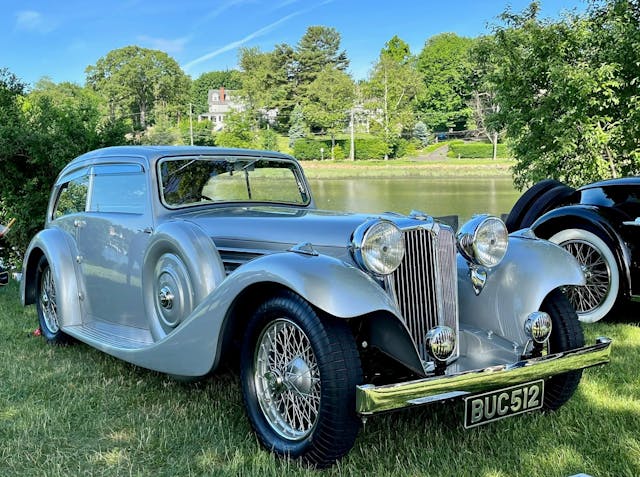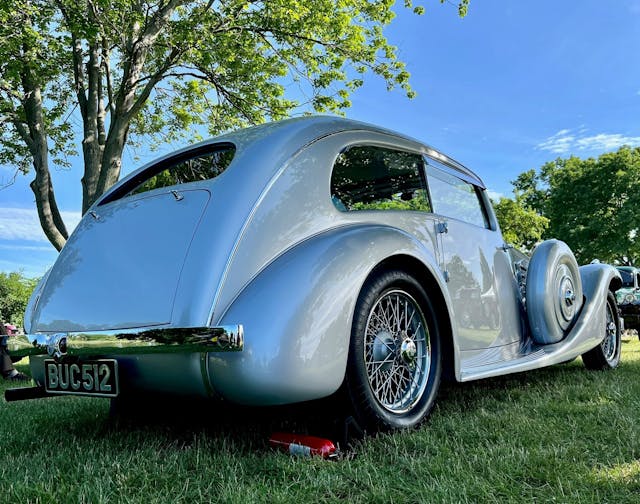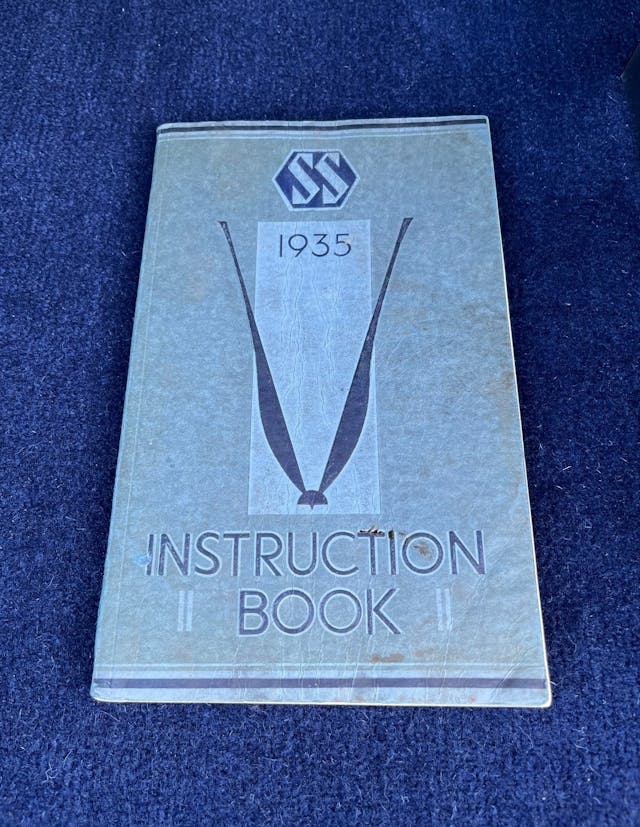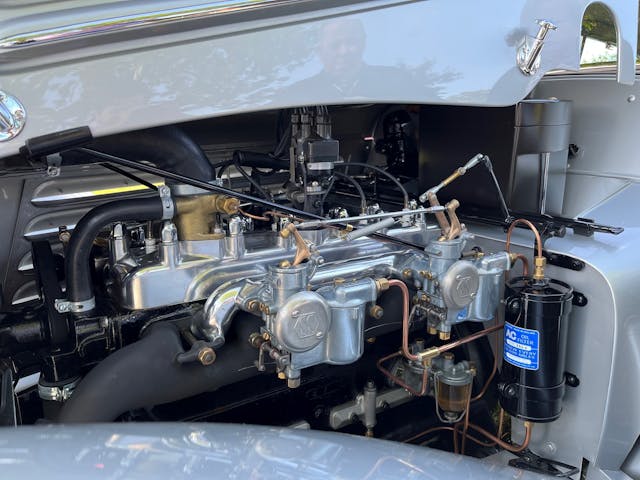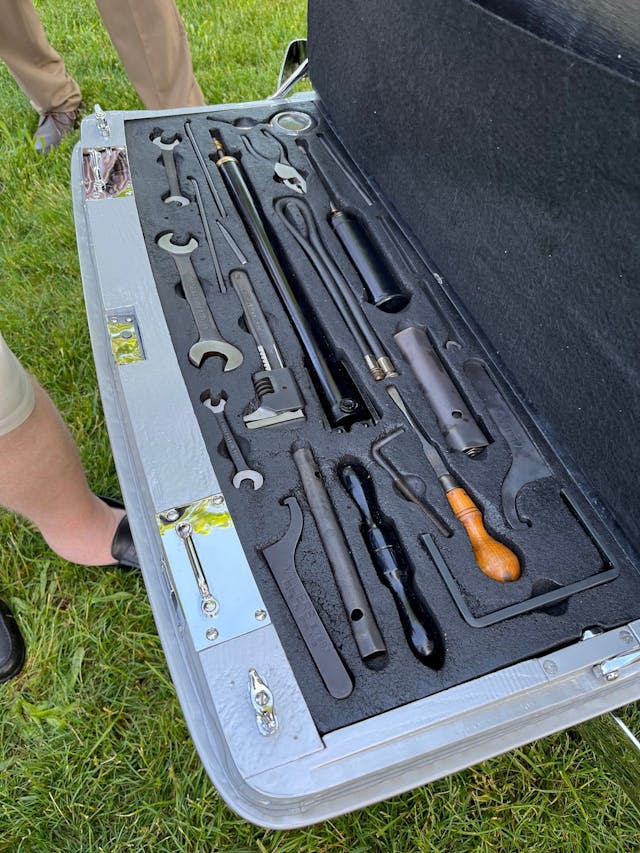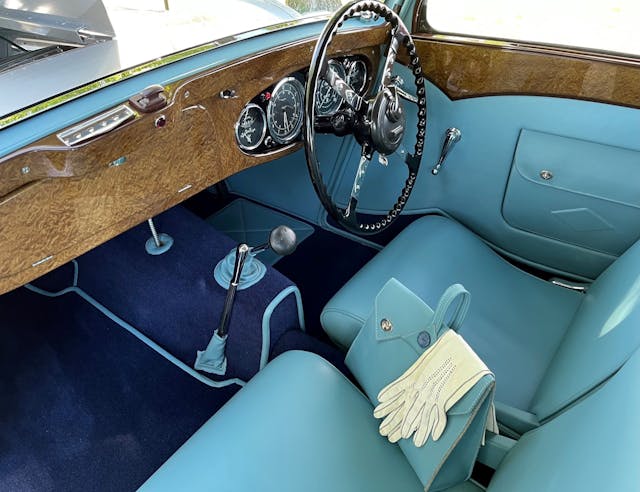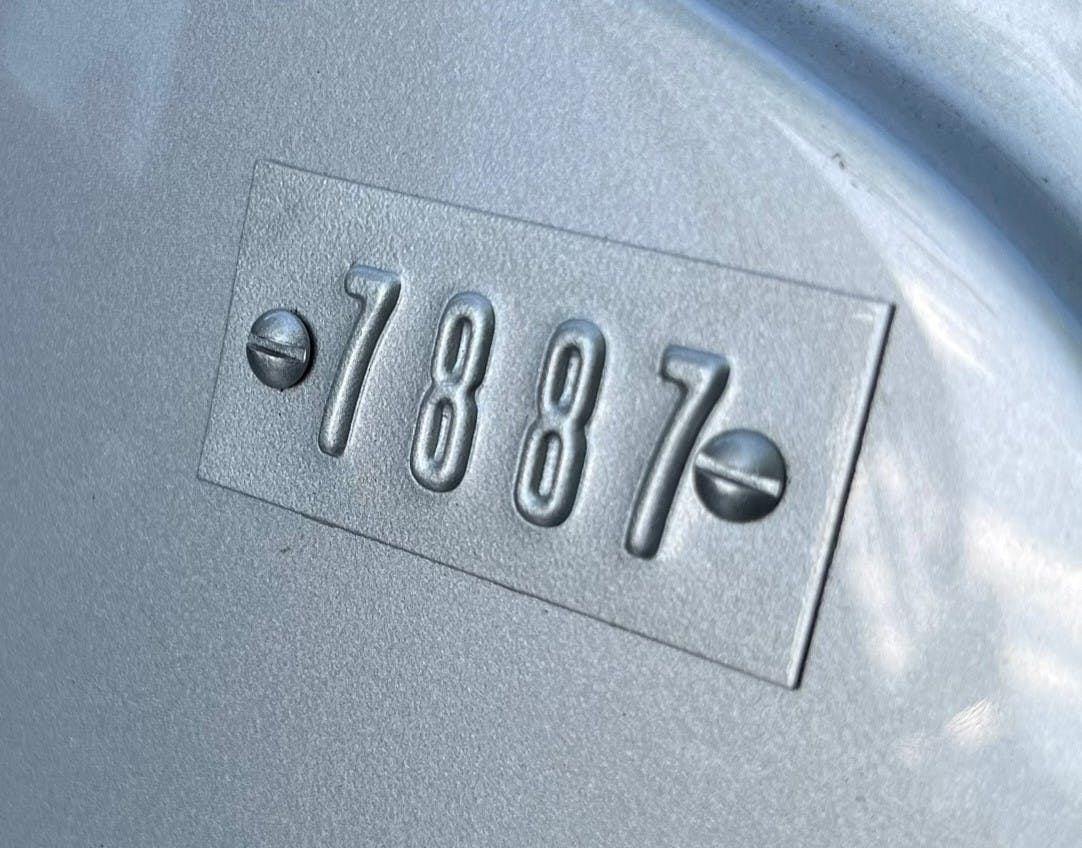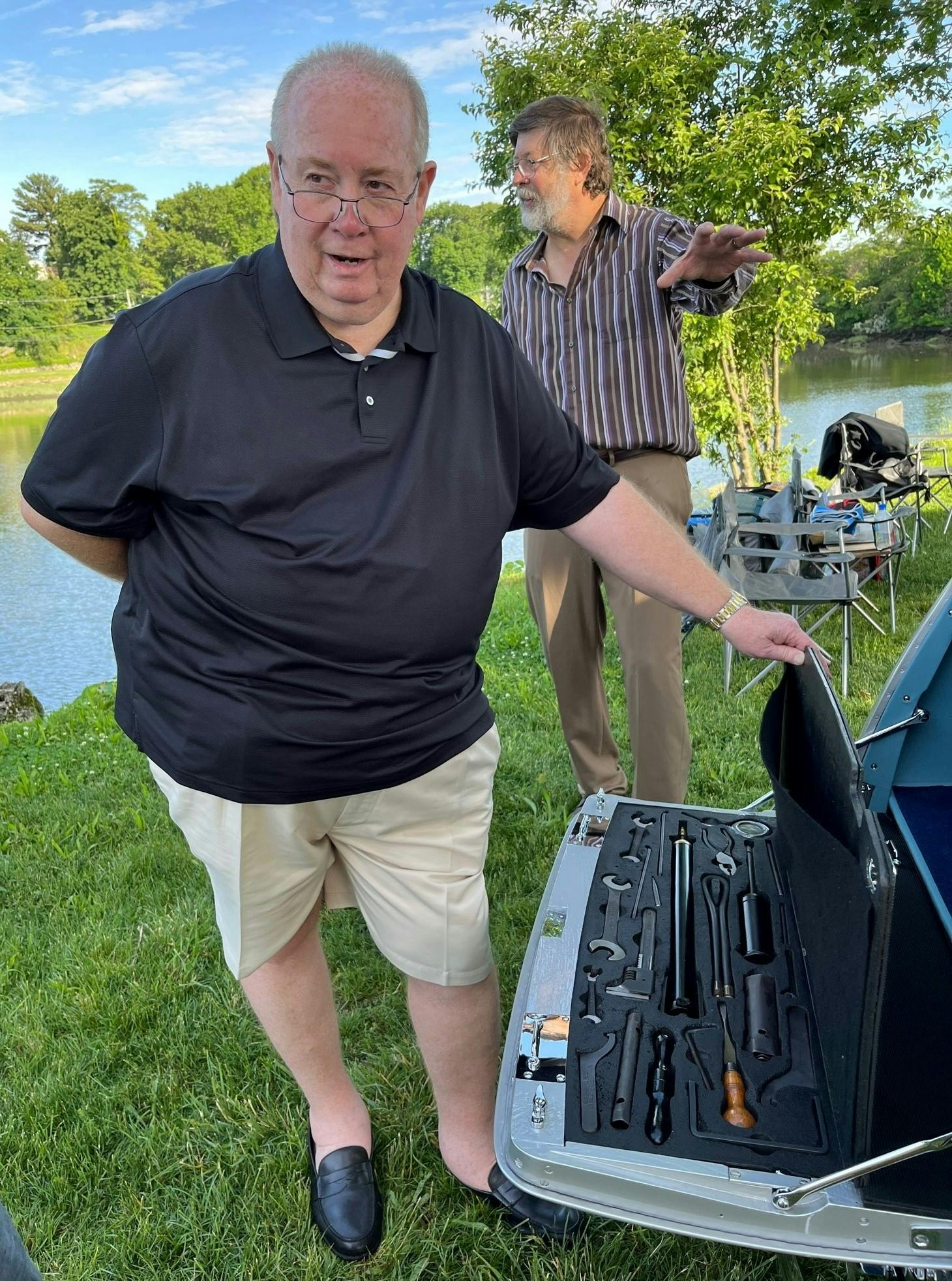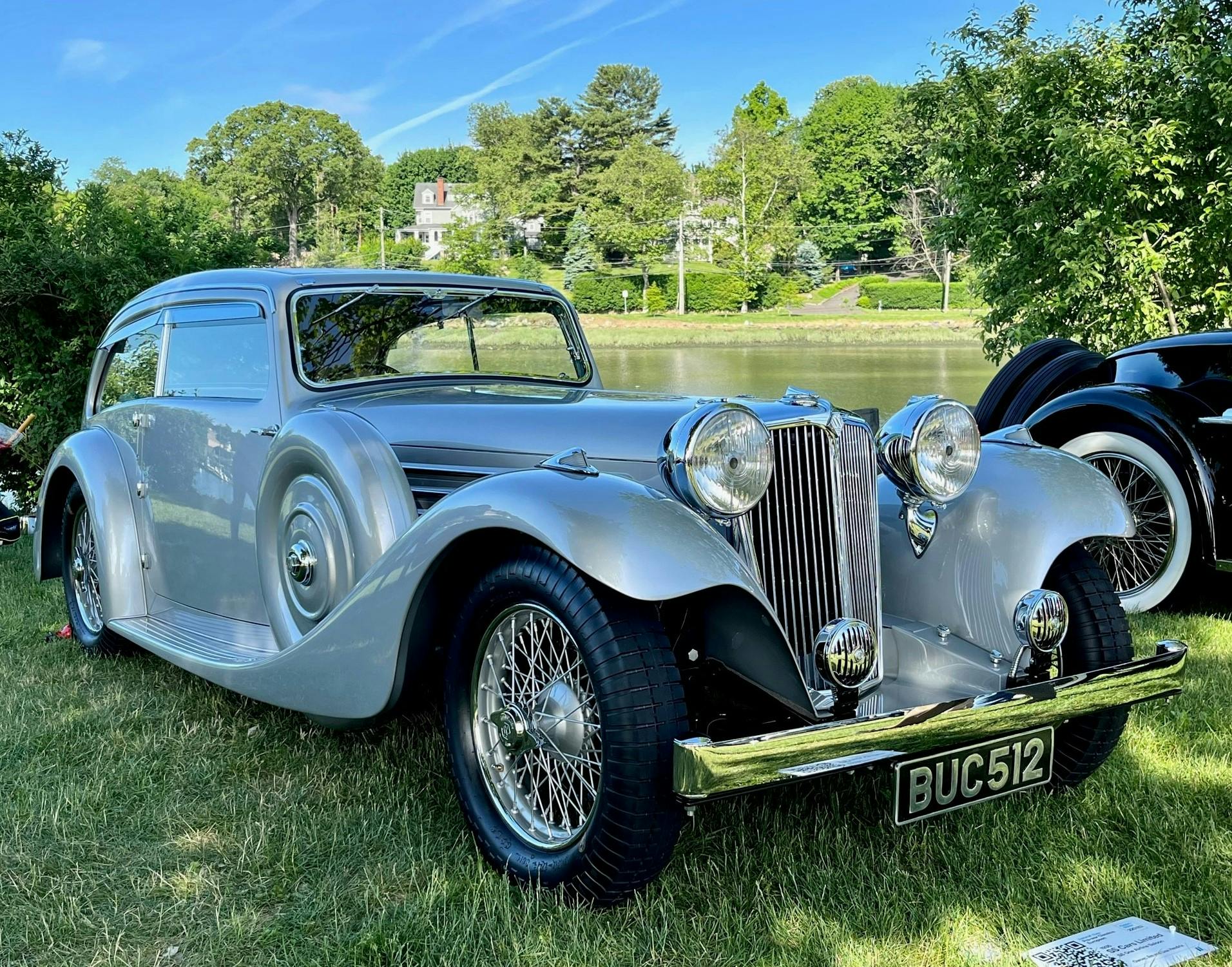Media | Articles
Forget the SS badge, this prewar beast is a proper Jaguar in all but name
There’s a reason why admirers often see the badge on the grille of Jim and Lisa Hendrix’s stunning 1935 SS Cars Limited SS1 Airline Saloon and immediately do a double take. Don’t the letters “SS” generally refer to the notorious Nazi Schutzstaffel? Yes, they do. Which is why we now know the British automaker that built this car as Jaguar.
“The company had five names—Swallow Sidecar Company, Swallow Sidecar & Coachbuilding Company, SS Cars Limited, SS Jaguar, and finally Jaguar,” Jim explains while prepping the car for the Greenwich Concours d’Elegance. “SS became kind of a bad word in the late 1930s, so the company didn’t want to be associated with it. People ask us about that all the time.”
Set aside that association, and few cars are as drop-dead gorgeous as this sleek SS1. Which explains why Jim and Lisa began searching for one long ago.
“We’re Jaguar lovers. We have cars from each era, and we started looking for this one 34 years ago,” Jim says. “We’ve owned it for 26 years and worked on it for 25.”
You read that correctly. The two-door saloon’s journey to the concours lawn took 25 years to complete, cumulating in its debut at the Pebble Beach Concours d’Elegance last August. It has since appeared at Amelia Island and Greenwich, and it won awards at all three events, including a tour ribbon at Pebble.
Marketplace
Buy and sell classics with confidence
This numbers-matching SS1 (#7887) was essentially a barn find, and that barn was officially a carriage house located in Gloucester in southwest England. Despite having never seen the car in person, the Hendrixes thought they had negotiated a deal for it and were ready to board a plane to finalize the sale. Then the owner called and said he’d changed his mind.
The Missouri couple was deflated, of course. “But eventually he called back,” Jim says, “and said he was ready to sell.”
“We asked, ‘Are you sure?’” Lisa recalls. “We didn’t want to make the trip unless he was sure.”
He was. Unfortunately, when the Hendrixes tried to bring the car home to St. Louis, they learned they were facing a bit of a hiccup. “We had to redo the ash frame because it had wood worm, and the U.S. wouldn’t let it into the country like that,” Jim explains. The car remained in the U.K. for years while the frame was rebuilt and other work was done. In the meantime, Jim and Lisa interviewed a number of restoration companies in the U.S. before choosing one close to home—Manns Restoration, located in Festus, Missouri, just 40 minutes south.
The point person in the car’s restoration, Jason Manns, is a fourth-generation craftsman in the family business. His great grandfather Charles Everett Manns went to Detroit in 1924 to learn the automotive trade, and he returned to his hometown of Festus 12 years later to open the only shop in the area that could repair a car’s engine, body, and its paint. Some 86 years later, the family’s talent is on full display at Greenwich.
“As a restorer, it’s an honor to have the opportunity to work on such a work of art,” says Jason Manns, who was joined at Greenwich by co-worker Mike Kimrey, who also played a large role in the restoration. “Every decision that was made involved a discussion about what to do. We wanted to authenticate every detail. It’s like being an archeologist, and it’s especially challenging when you’re dealing with pre-World War II stuff.”
The company we now call Jaguar began making motorcycle sidecars in 1922. Co-founder Sir William Lyons had greater ambitions, however, and beginning in 1927 he made bodies for the Austin Seven while operating as the Swallow Coachbuilding Company. In 1931, he introduced the SS series with the long bonnet and low silhouettes that became the company hallmarks.
This SS1 is one of 624 manufactured over a two-year period, and one of just 16 known to survive. Only five are in running condition. SS1 #7887 was finished in “all silver” with a “special light blue” interior that celebrated the 25th Silver Jubilee of King George V of England. “Of course, he was eventually succeeded (after King Edward VIII and King George VI) by Queen Elizabeth II, who just celebrated her 70th Platinum Jubilee,” Jim Hendrix says.
Jim explains that the SS1’s silver paint, wheels, and interior were all £2 special orders that were added to the base price of £365, which equates to about $2500. That’s approximately $52,750 today—a steal compared to what it cost the Hendrixes to buy, ship, and restore the car to its current condition. “It’s way better than new, no doubt,” Jim says. “At 87, it’s in better shape than I am at 67.”
Manns’ meticulous work involved sanding through seven layers of paint to reach the original body color. The restoration team ripped out the seams in the upholstery to determine the original color of the cloth.
“It was rough when we got it,” Jim Hendrix admits. “We left nothing to chance [while restoring it]. We researched everything, and it sometimes took years to get correct parts. We just wanted to get it right.”
It took eight years, for example, to locate two period-correct RAG British carburetors, and when Hendrix scored a pair from an acquaintance that he’d helped previously, his past kindness was rewarded two-fold. The carbs, which were rebuilt by Manns and his team, wear consecutive serial numbers. Jim still shakes his head over his good fortune. “They’re as rare as hen’s teeth, so imagine how difficult it is to find two that are numbered consecutively. Maybe never again,” he says. “Just another cool thing that happened along the way.”
“They’re as rare as hen’s teeth, so imagine how difficult it is to find two that are numbered consecutively. Maybe never again,” he says. “Just another cool thing that happened along the way.”
Here’s another: The rear of the SS1 contains a tailgate drawer of tools that rest in form-fitted cutouts, and, amazingly, the rubber/foamlike material just needed to be cleaned. It is still pliable. “You’d never guess it’s original,” Lisa says.
Beneath the SS1’s bonnet is a 2663-cc, six-cylinder, side-valve engine mated to a four-speed manual gearbox. With an output defined as 20 taxable horsepower in England, the mill actually produces 70 horsepower.
The interior of the car is plush, of course, with armrests in front and back, a “scumbled” wood-grained dash, and plenty of ashtrays—a definite sign of the times. In that vein, the car’s side windows have rain shields along the roof edge so that, Lisa says, “when it rains you can smoke without getting wet.”
“And this front windscreen opens,” Jim adds. “They called it air conditioning. It says exactly that in the manual.”
Jim and Lisa clearly know the SS1 inside and out. “William Lyons was a real stylist. I could stand here and talk about this car for hours,” Jim says. “You’d better run while you can.”
He makes it clear that bringing the car back to life was a “total team effort” and includes Jason Manns and Mike Kimrey, who travel with the car wherever the Hendrixes show it. First and foremost, however, Jim says his bride’s involvement is vital. “We wouldn’t do this if we couldn’t do it together,” he says.
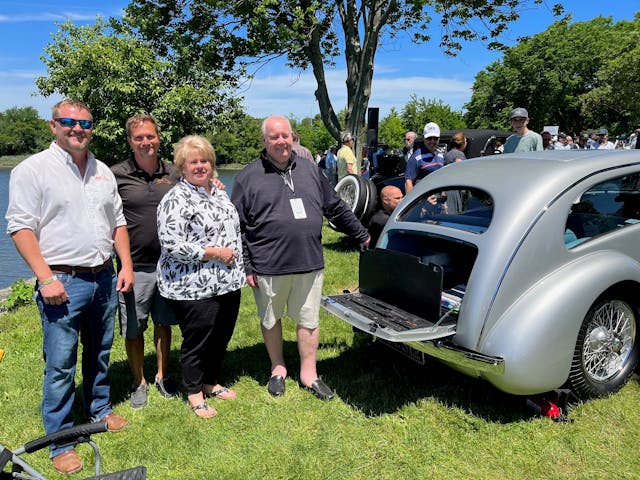
As a tribute to Lisa’s involvement, Manns’ upholsterer used some excess material to create a matching purse for her. It was proudly displayed on the front seat at Greenwich.
“We love owning it,” Jim says of the majestic automobile, “and because they’re so rare—and none of the others are in this shape—people seem to be drawn to it. You can tell by the look on their faces that they’re confused about what they’re seeing, and we enjoy telling them all about it.”





